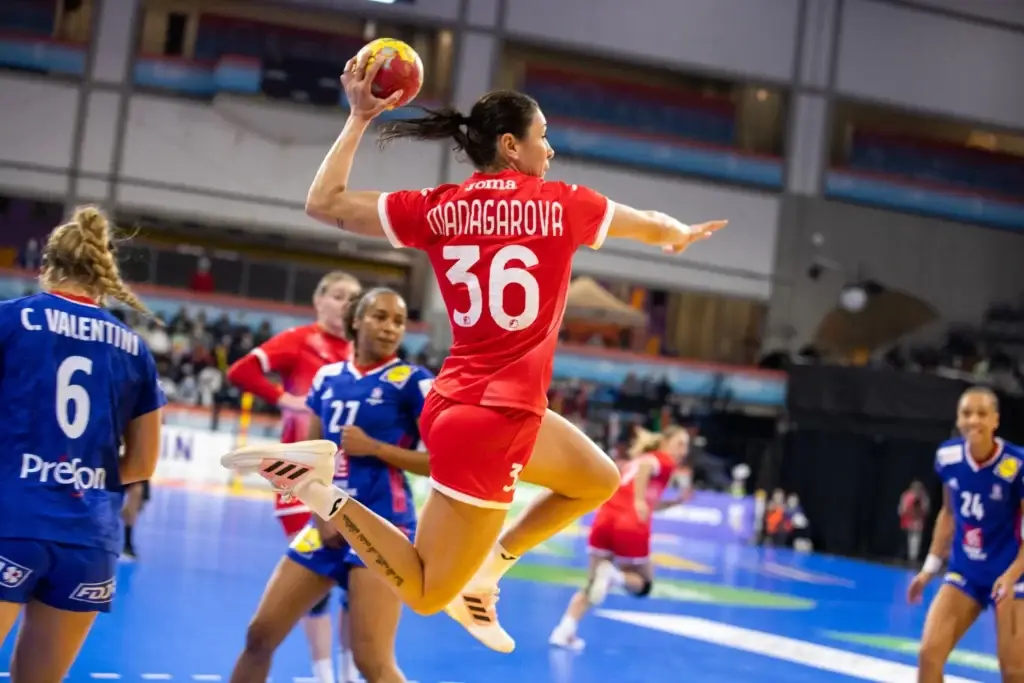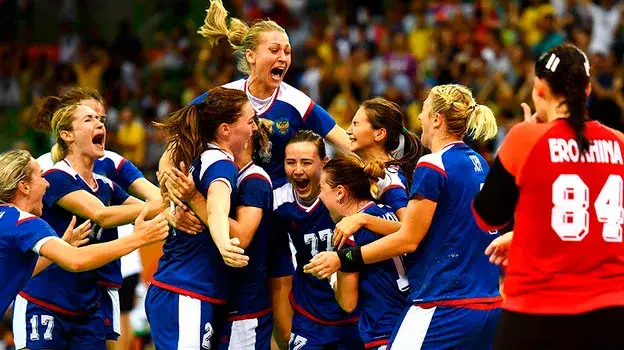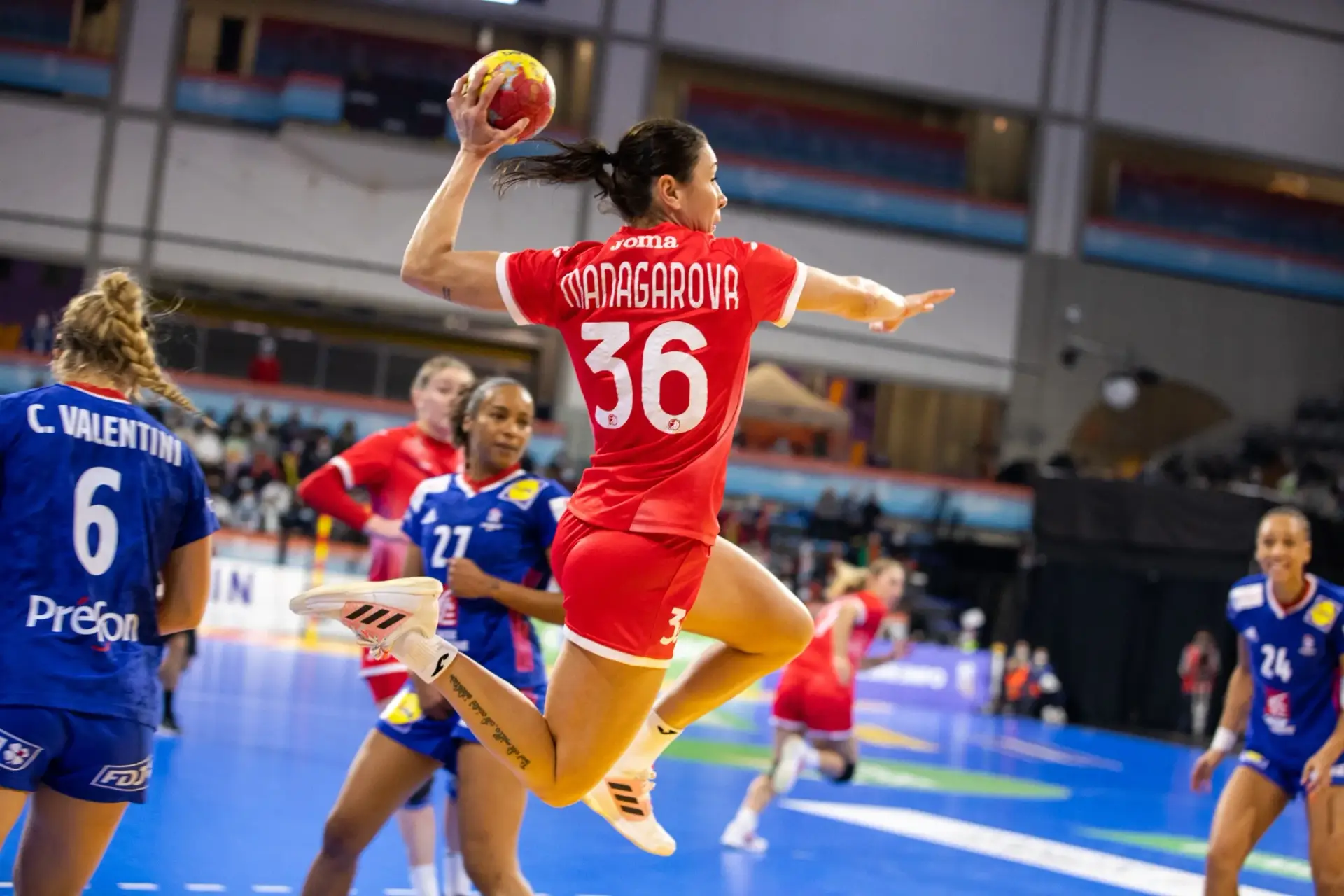Handball is an incredible sport that combines speed, strength and team spirit. The discipline has its roots in ancient times, but only really flourished in the 20th century, when it took on modern forms and became part of the Olympics. In this article, we provide facts about handball, and it is not just about boring numbers and records. Prepare for information that will turn your idea of sport on its head.
Fact 1: Handball is one of the most energy-consuming sports
Handball is a marathon of explosive effort and endurance. Every match becomes a battle in which speed and power are decisive. Handball is often considered one of the most intense sports in several countries as athletes run on average around 5 kilometres per match. But these are not leisurely kilometres: there are constant accelerations, changes of direction and jumps.
The field is relatively small: it is only 40 metres long and 20 metres wide, which is considerably less than a football pitch. In this limited space, an incredible dynamic develops: players are constantly changing roles, moving from defence to attack, which requires full commitment from them. The average number of goals per game is around 50, and every goal scored is a vivid illustration of energy and teamwork. Handball players not only run, they move fast, they change attacking directions and that is what makes the sport so spectacular.
Fact 2: Handball was developed as a tool for physical education.
The discipline did not emerge by accident. The format was invented at the beginning of the 20th century in Germany, and the main task was to create an ideal game for schoolchildren. Physical education teachers wanted to develop children’s coordination, endurance and reaction, which led to the creation of a new format. The history of handball began on open fields and there were 11 players per team, making it similar to football. In the 1920s, the rules changed: the action moved to indoor venues and the number of athletes was reduced to seven.
Why? The point is that the game became too intense for the big teams, and to keep the momentum and not turn it into another ‘long game’, the rules were changed. Since then, handball has become an example of how transformation can lead to the creation of a new global sporting phenomenon. The modern format is the result of these changes and today handball is popular not only in schools but also on the major international stages.
Fact 3: Handball did not participate in the Olympics for a long time.
 The discipline first appeared at the 1936 Olympic Games in Berlin. On that occasion, it was presented as an exhibition sport. But since then, handball had to wait more than three decades to return to the Olympic programme. The return came in 1972 at the Munich Olympics, where it became an official competition. In 1976, women’s handball was also included in the OG programme, an important step in popularising handball among women.
The discipline first appeared at the 1936 Olympic Games in Berlin. On that occasion, it was presented as an exhibition sport. But since then, handball had to wait more than three decades to return to the Olympic programme. The return came in 1972 at the Munich Olympics, where it became an official competition. In 1976, women’s handball was also included in the OG programme, an important step in popularising handball among women.
Handball soon caught the attention of spectators because of its speed and spectacular nature. Today, the OI is one of the main goals of many handball teams around the world. Top athletes strive to showcase their skills and win gold medals in this field. The discipline got a big boost from the Olympics, where teams from France, Denmark and Norway became world leaders by showing their strength and skill.
Fact 4: Handball has many interesting records.
One of the most remarkable is that of Danish player Mikkel Hansen, who scored 141 goals in the Champions League in one season. This is a truly unique result that highlights incredible performances and skill. But it is not the only admirable record in handball. The fastest goal in handball history was scored just 3 seconds after the game started! Such quick reactions and readiness for action are essential qualities of the best female handball players.
The Norwegian national women’s team has also left its mark on history. They have repeatedly won World and European Championships, making them one of the most successful teams. The records inspire incredible new achievements and motivate young talent to strive for the top.
Fact 5: Handball is popular in different countries.
In Europe, for example, the format is particularly popular. The German Bundesliga and the French Ligue are real talent factories that attract thousands of spectators to the stands and millions to the screens. These leagues are known for their intensity and high level of competition.
In South Korea and Japan, the discipline is also actively developing, but with an emphasis on speed and tactics. Beach handball, which has become popular in countries such as Spain and Croatia, offers a completely different form of play: on the sand, under a blazing sun, with acrobatic throws and incredible jumps. The view is spectacular and an unusual approach to familiar rules. Team players try to adapt their skills to unusual conditions, making this format unique.
Fact 6: Passive play is not allowed in handball.
There is no room for delay here. An interesting rule is the ban on passive play. Referees ensure that teams do not hold the ball for too long without trying to attack. If a team holds the ball but does not try to score, the referee raises his hand to indicate passive play. At that point, the team must quickly end the attack or lose possession of the ball.
This rule makes handball even more dynamic and unpredictable. The constant movement and the need to make decisions in a matter of seconds create an unforgettable atmosphere where there is no time for rest.
Conclusion
 This great sport combines the best of team games: speed, tactics, strength and team spirit. The facts show how varied handball can be. Try to find out more or try this dynamic discipline yourself – the experience will be unforgettable!
This great sport combines the best of team games: speed, tactics, strength and team spirit. The facts show how varied handball can be. Try to find out more or try this dynamic discipline yourself – the experience will be unforgettable!
 en
en  ru
ru  de
de  ar
ar  es
es  nl
nl  hi
hi  fr
fr  it
it  pt
pt  el
el 










